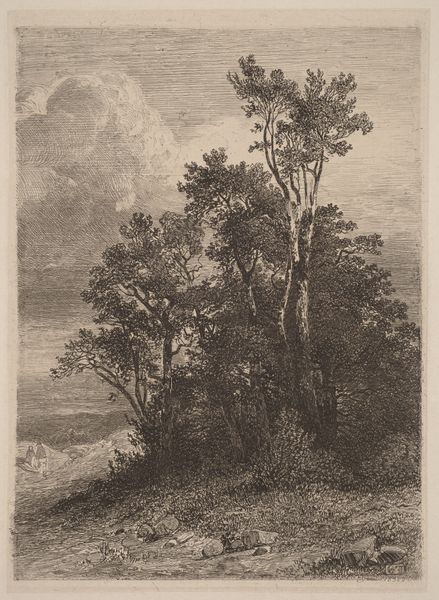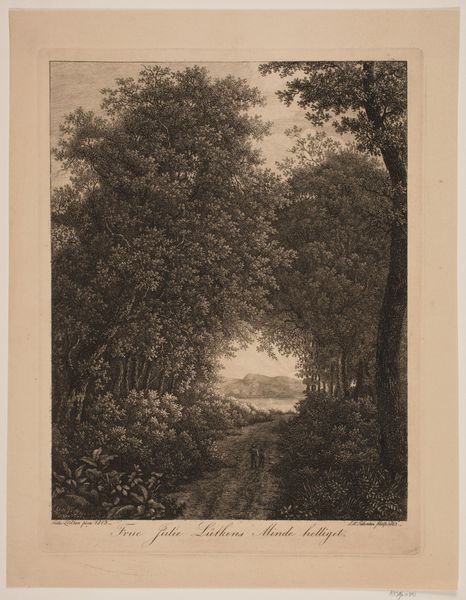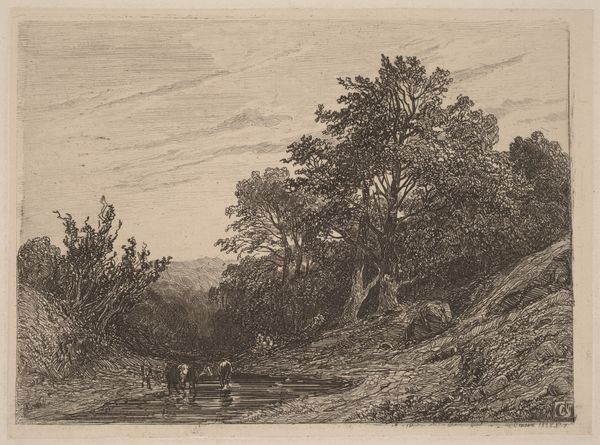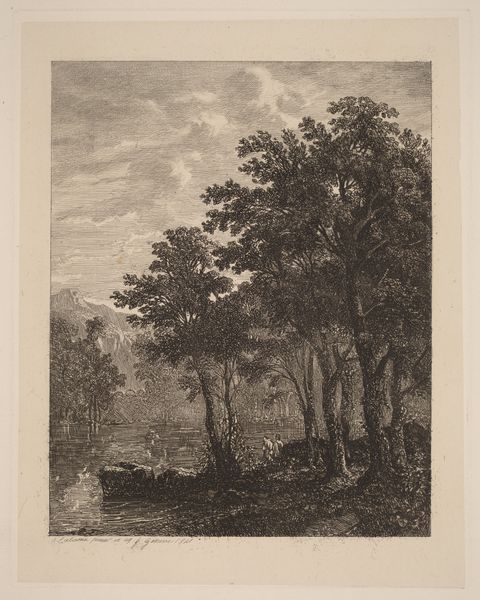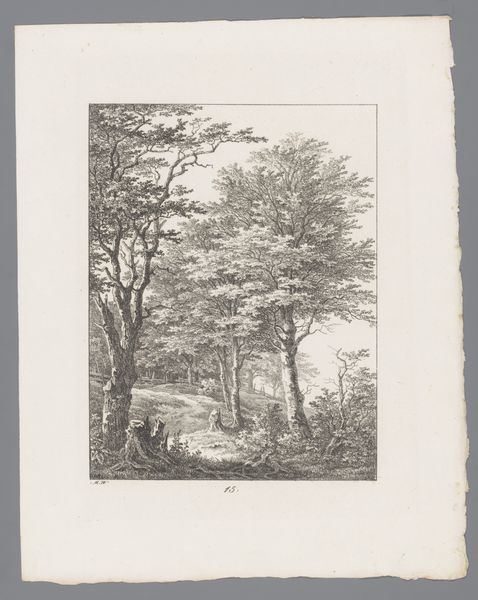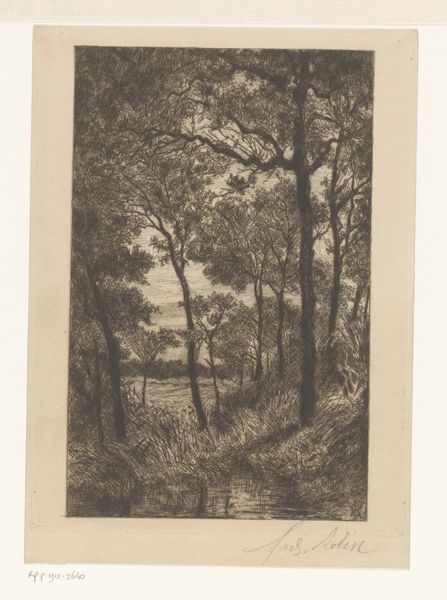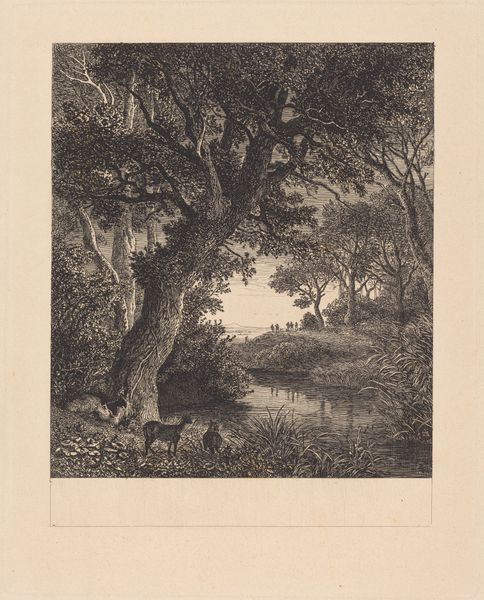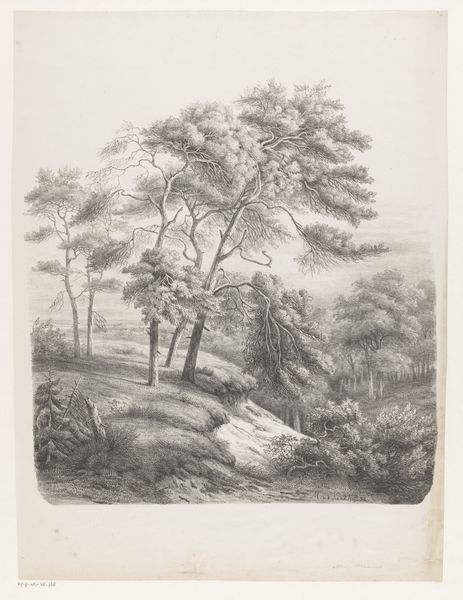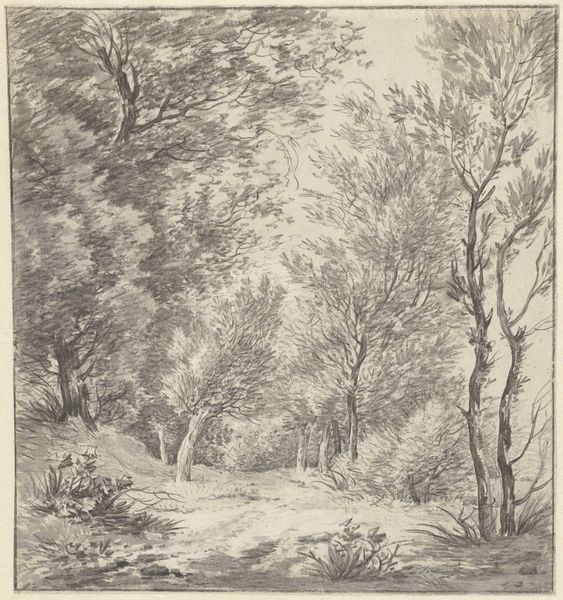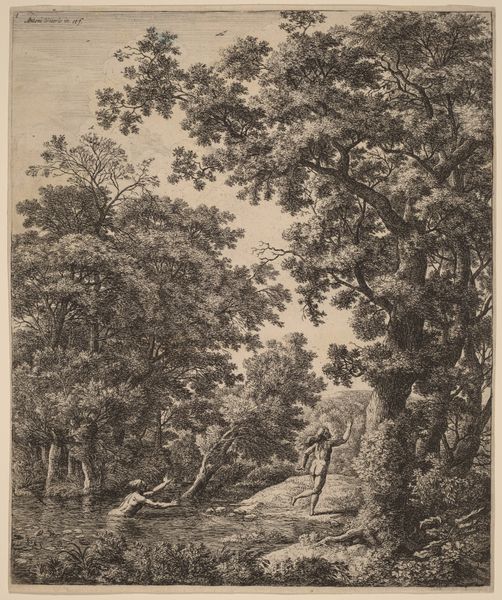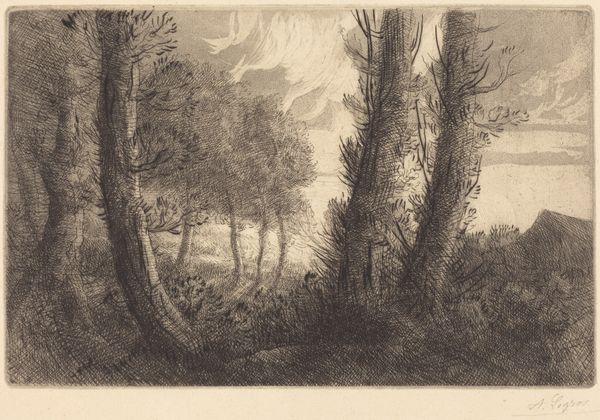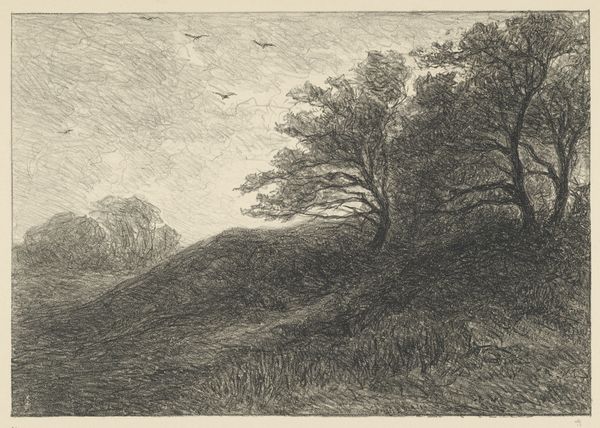
print, etching
# print
#
etching
#
landscape
#
etching
#
romanticism
Dimensions: plate: 21.3 x 16.2 cm (8 3/8 x 6 3/8 in.) sheet: 35.6 x 27 cm (14 x 10 5/8 in.)
Copyright: National Gallery of Art: CC0 1.0
Alexandre Calame created this etching, Chemin Creux, using a copper plate and a painstaking process of incising lines to hold ink. The magic of etching lies in its indirect approach. Calame would have coated his plate with a waxy, acid-resistant ground. He then drew his composition, digging into the wax to expose the copper below. Finally, the plate was submerged in acid, biting away at the exposed lines, and creating grooves that would hold the ink. This process allowed for fine detail, visible in the textures of the foliage and the subtle gradations of light. The act of etching, like other forms of printmaking, democratizes art. It allowed for a wider distribution of images in a pre-photographic era, contributing to a growing visual culture. Although laborious, the mechanical reproducibility inherent in printmaking aligns with the burgeoning industrial era, even as the image itself depicts a serene, pre-industrial landscape. Considering the material and process reminds us that art-making is always embedded in broader economic and social conditions, and the perceived divide between "high art" and accessible craft is more blurred than we might think.
Comments
No comments
Be the first to comment and join the conversation on the ultimate creative platform.
